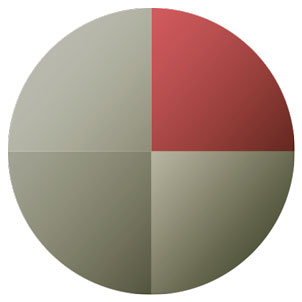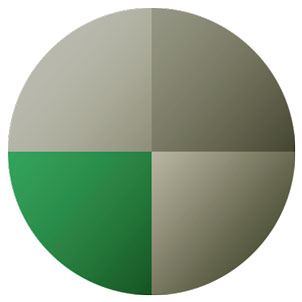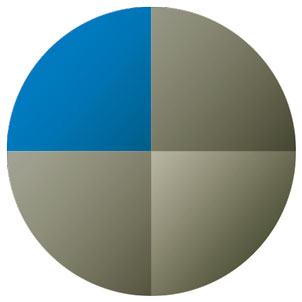What is your style of behaviour?
A person’s style of behaviour is what you see when you communicate and cooperate with them. It reflects their way of doing things. Prudence is called for, however; it is like an iceberg. You only see what is visible above the water. Someone can appear very supportive in interaction with his environment, but that doesn’t necessarily mean he is motivated to help someone, or to think in a customer-oriented way. How can that be explained?
 The style of behaviour may also differ according to the situation. The style may be fundamentally different than, for example, in stressful situations or in a situation in which someone is forced (by himself or by his environment). This is called an adapted or response style.
The style of behaviour may also differ according to the situation. The style may be fundamentally different than, for example, in stressful situations or in a situation in which someone is forced (by himself or by his environment). This is called an adapted or response style.
Dr. William Moulton Marston was an American psychologist who developed the DISC model. This model consists of four styles of behaviour. In most measuring instruments these are represented by the colours red, yellow, green, and blue.
 Dominance
Dominance
The more this style has been developed, the stronger the tendency to control the environment. The less this style has been developed, the calmer the reaction to changes and challenges. A dominant person reacts pro-actively to changes and challenges, wants to win, is highly task- and result-oriented, has a “short fuse” and is quick to anger, but also forgets quickly. This style is indicated with the colour red: fiery, passionate and combative.
 Influence
Influence
This is the style of behaviour that expresses how strong a person influences his environment through verbal persuasiveness and non-verbal charisma or charm. He is very focused on the feelings of others. The stronger this style is present, the greater the trust in others. The weaker, the less others are inspired or convinced. In that case, this person will often be quiet and doesn’t like to sell his ideas to others. If this style is strong, a person will be enthusiastic, amicable and infinitely optimistic. Yellow is the colour that matches this style: sunny and warm.
 Steadiness
Steadiness
Green is the colour of calm, nature and stability. This style indicates how strong one acts according to habit and fixed patterns. The stronger this style is present, the less there is flexibility in dealing with changes. The weaker, the greater the will and capacity to adjust to changes in the environment. The working pace of someone with a lot of green is slow but steady. He is patient, attentive, service-oriented and reliable. The working pace of someone with little green is high but hectic.
 Compliance
Compliance
A strong conformist holds on to set rules and procedures. The weaker this style, the stronger the tendency to free thinking and acting. Someone with a lot of blue in his behaviour profile is precise, organised, perfectionist and analytical. With little blue in his behaviour profile, someone is creative and non-conformist. Blue is the colour of the police and the tax envelope.
Everyone is unique
Everyone has developed these four styles to a certain extent. The combination of these forms a personal style of behaviour. A mix that ensures someone cannot be assigned to a colour just like that. It helps to make styles of behaviour a subject of discussion. However, as mentioned above, prudence is called for.
After all, styles of behaviour tell us something about methods of communication and cooperation. They reflect the way of doing things. Underneath the surface we also encounter motives, values, skills and talents.
These underlying characteristics make a style of behaviour darker or lighter. If a person has a green style of behaviour, with a strong underlying practical drive, the green may well seem more like red. Or the other way around, if someone has a strong red style with a strong emphatic ability, red may look like green.
In short: the combination of styles of behaviour, motives and talents plus experiences are unique for each individual.
Awareness model
I use the awareness model to explain in a simple way I look at thinking style, motives, styles of behaviour in relation to talents and personal development.
